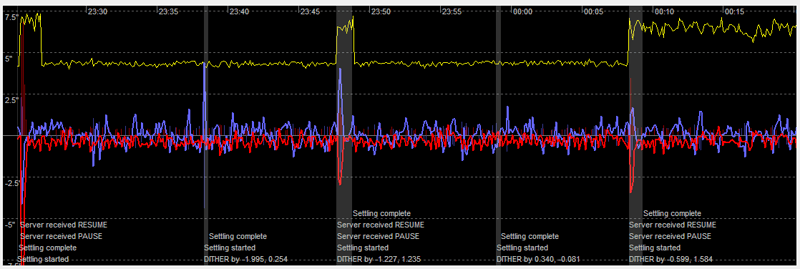Hi,
I am experiencing an issue that I think may be related to communication between SGP and PHD2. I am running versions 2.4.2.11 and 2.5.0,respectively.
I am actually sitting at the Okie Tex star party and am experiencing aborted sequences after every autofocus run (each 1 degree C drop).
What it looks like is that SGP requests a dither, then immediately goes into the autofocus run (please note that i have enabled the “pause guiding during autofocus” feature. Once the auto focus run completes, it reports that it is restarting autoguiding, and PHD2 settles… however, after the settling is complete, SGP immediately reports that the sequence has ended. The exclamation alert by the individual event in the sequence reports that the guide star was lost, however PHD2 is happily guiding along. Further, if I dismiss the dialog that indicates the sequence has ended and “resume the sequence” it immediately restarts.
The temperature has dropped 9 degrees C so far tonight, so i have lots of these premature sequence endings in the attached logs, along with one field power failure (which is why there are two logs). Any suggestions would be greatly appreciated.
There are several examples, but one follows a successful focus run at 11:27:00 in the first log. The 3rd and 4th logs are the corresponding PHD2 logs.
Best regards,
Craig Smith
